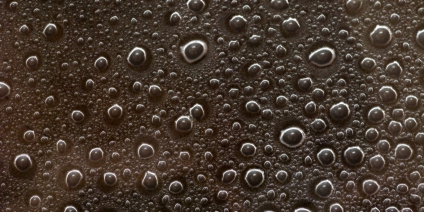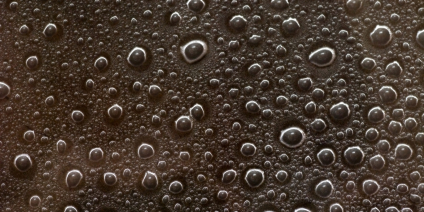The Physics of Droplets Takes Off
If you’ve ever seen a chef sprinkle a few drops of water on a hot skillet, then you have seen the Leidenfrost effect in action. This phenomenon occurs when a liquid drop is placed on a surface that is hotter than its boiling point. A layer of insulating vapor forms and prevents the drop from rapidly boiling away, making it skitter around the pan like a hockey puck. Normally, what happens next is of no interest to the chef, but, as reported in Physical Review Letters by Franck Celestini at the Laboratoire de Physique de la Matière Condensée (CNRS Université de Nice-Sophia Antipolis), France, and colleagues, eventually the droplet evaporates to a radius at which the vapor lubrication abruptly stops, and it flies off the hot surface.
The team sprayed drops of water or ethanol of a controlled size onto a silicon substrate bonded to a heated copper block, and observed the droplets’ behavior with a high-speed camera. A typical water droplet first bounces on the surface, then comes to rest buffered by a layer of vapor, where it sits, gradually getting smaller. At some critical radius, the droplet takes off like a rocket. In the case of ethanol, however, with its lower latent heat of evaporation, the droplet doesn’t have time to bounce and stabilize before rocketing off. Furthermore, contrary to expectations, the vapor layer actually gets thicker as the droplet shrinks, not thinner.
These observations agree with the authors’ theoretical model that incorporates heat transfer and mechanical forces, in which the cushioning, upward pressure of the vapor matches the weight of the drop, until the droplet becomes small and light enough to break the equilbrium. According to the authors, such studies should bear directly on optimum ways of creating fuel sprays for diesel engines, and cooling surfaces with liquid mists. – David Voss





